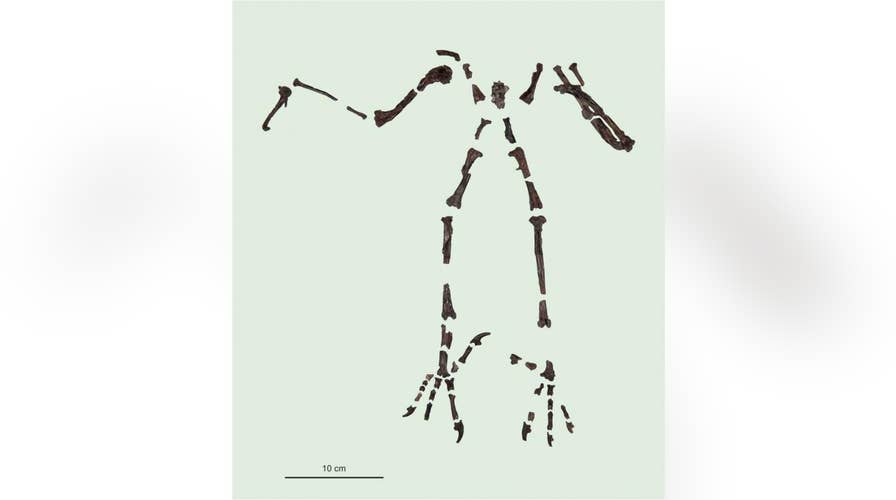Fox News Flash top headlines for August 4
Fox News Flash top headlines are here. Check out what's clicking on Foxnews.com.
Paleontologists have identified a 55-million-year old owl fossil that had talons like a hawk, according to a newly published study.
The research tells the tale of Primoptynx poliotauros, a creature nearly 20 inches in length and comparable in size to modern snowy owls. The fossilized remains were excavated from the Bighorn Basin in Wyoming in 1990, and are one of the most complete fossils of owls from the Paleogene era ever found.
"Owls today have four toes with claws of equal size to catch relatively small preys and kill them with the beak," said paleontologist and study co-author, Thierry Smith, in a statement. "Primoptynx has a longer first and second toe, as seen in hawks and other members of the family Accipitridae. Those more developed toes are used to pin down prey, which are punctured by the talons. So it was an owl that hunted like a hawk on medium-sized mammals."

The skeleton of Primoptynx poliotaurus. (Credit: Senckenberg Research Institute)
8-FOOT SEA SCORPIONS SWAM THE OCEAN 500M YEARS AGO HAD MASSIVE CLAWS TO CATCH PREY
Researchers study owl fossils by looking at the shapes of their bones, including their tarsometatarsus, Smith said in an interview with LiveScience.
However, it was Primoptynx's hunting toes that really captured the researchers' attention, as modern owls "kill with their beak," Smith added in the statement.
Primoptynx may have hunted on small-to-medium-sized primates or mammals that lived in trees and on the ground, Smith told LiveScience.
The fossils, combined with other findings, show the diversity of owl species, and how they thrived after the age of dinosaurs. Dinosaurs were wiped out by an asteroid that resulted in the extinction of nearly 75 percent of all species on the planet, the fifth mass extinction event in the planet's history.
Although the toe proportions on Primoptynx poliotaurus suggest it hunted with its feet, like modern raptors, it's unclear what changed in their evolution process that caused owls to hunt with their beaks, the study's lead author, Dr. Gerald Mayr, said.
SCIENTISTS DISCOVER DIMINUTIVE DINOSAUR ANCESTOR: A 4-INCH 'TINY BUG SLAYER'
"[W]e assume that it may be related to the spread of diurnal birds of prey in the late Eocene and early Oligocene, approximately 34 million years ago," Mayr, of the Senckenberg Research Institute and Natural History Museum, added in the statement. "Competition for prey with diurnal birds of prey may have triggered feeding specializations in owls, possibly also leading to these charismatic birds' nocturnal habits."
The study was published in the Journal of Vertebrate Paleontology.





















